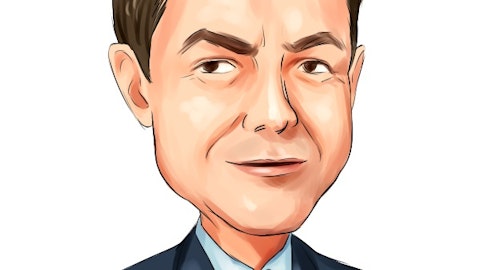But it’s really, generally speaking, not going to be the states that you see companies really pulling back from. If you look at our portfolio, we’re not a heavy coastal writer and don’t plan on being a heavy coastal writer. That’s not how we’re building this book of business. So we see ample opportunities in our current footprint. And as we approach our margin targets, which we expect to do over the next couple of years based on pricing and underwriting actions we’re taking, then we’ll contemplate further expansion.
Unidentified Analyst: Awesome. Thanks for that. And if I could sneak one more in. Can you quantify the cat losses by line for the commercial lines of business?
Mark Wilcox: Yes, certainly. So this is Mark here for the quarter. And let me just walk you through the cat. You want just standard commercial lines?
Unidentified Analyst: Yes.
Mark Wilcox: Okay. So for Q3, commercial auto, $2 million commercial property, $30.3 million and BOP, $4.4 million to $36.7 million or 4.7 points on the combined.
Unidentified Analyst: Awesome. Thanks, guys.
Operator: Thank you. Our last question comes from the line of Bob Farnam from Janney. Your line is now open.
Robert Farnam: Thanks. Good morning. A couple of more questions on the personal lines book. Just – so the mass affluent market as the book grows and it’s more of a percentage of the mass affluent, is the – are you expecting the same type of combined ratio? And if so, are you expecting a difference in terms of the loss ratio versus expense ratio components. In other words, is the affluent markets with a higher expense ratio but a lower loss ratio. I’m just trying to figure out kind of how this is going to flow through going forward?
John Marchioni: Yes, sure. So I would go back to Grace’s question earlier. I think our target will be at 95%. And that’s how we think about it on a risk-adjusted basis for both home and auto, and that’s what we’re striving for. I do think the one longer-term benefit in this space is you do expect to see over time higher retention rates based on this class of business. And generally speaking, in the personal lines market, aging of a book of business creates enhanced profit margins. And I think that’s where you might see some additional benefit. But again, we look at this on a risk-adjusted basis as 95% being the target, and that applies to how we think about this particular segment of the market that we’re moving into.
Robert Farnam: All right. And is it – are you finding these types of customers demand more services from Selective? Or is that just something that is not really a factor at this point?
John Marchioni: So I think from a product perspective, including optional coverages, we’ve dialed up those offerings, and we are seeing a higher adoption rate, that higher adoption rate of those additional coverages is what also drives retentions higher because they’re not matched by everybody in the marketplace, and we are starting to see that. From a claims perspective, on the service side, we’ve always had a service philosophy around claims that’s applied to our Commercial Lines business and our personal lines business, and I think we are well suited to meet the expectations of this customer base from a claim servicing perspective.
Robert Farnam: Okay. And one question specifically on the personal auto. I mean, the combined ratio of 127%. If I heard Mark right, it sounds like maybe five points of that was adverse reserve development. So you’re still looking at 122%. I don’t know how much of that was related to cats, but I’m still going to get a feel for it, it’s a long way to get back down to that 95% is – in terms of how long do you think it’s going to get down to 95%, it’s probably more were of getting to, but it just seems like it’s still a long way to go?
John Marchioni: Well, there’s no question there’s a gap that we’re looking to overcome. And I think the pricing that we put out there and our expectations for pricing next year at that, call it, low 20% kind of range will have a big impact. The open question is, where do loss trends ultimately settle out? And we have an expectation for loss trends, but we’ve also highlighted the fact that loss trends remain somewhat uncertain when you think about some of the drivers that are impacting everybody in the industry. But from the – what you piece together from Mark’s commentary, the, call it, accident year, when you strip out the impact of the prior year development, the starting point is around a 116,116.5% and that 95% target is how you want to think about that gap.
So that’s the gap that we’re looking to close. We have clarity around our rate plan. We have an assumption relative to forward loss trends that we expect and how those two pieces come through on an earned basis over the next several quarters will ultimately determine the time frame to get to that 95%.
Robert Farnam: Okay. Thanks for the answers.
John Marchioni: Thank you.
Operator: Thank you. At this time speakers we don’t have any questions in queue. You may proceed.
John Marchioni: Well, thank you all for your participation and look forward to talking to you soon. Thank you.
Operator: Thank you. And that concludes today’s conference. Thank you all for participating. You may now disconnect.
Follow Selective Insurance Group Inc (NASDAQ:SIGI)
Follow Selective Insurance Group Inc (NASDAQ:SIGI)
Receive real-time insider trading and news alerts




